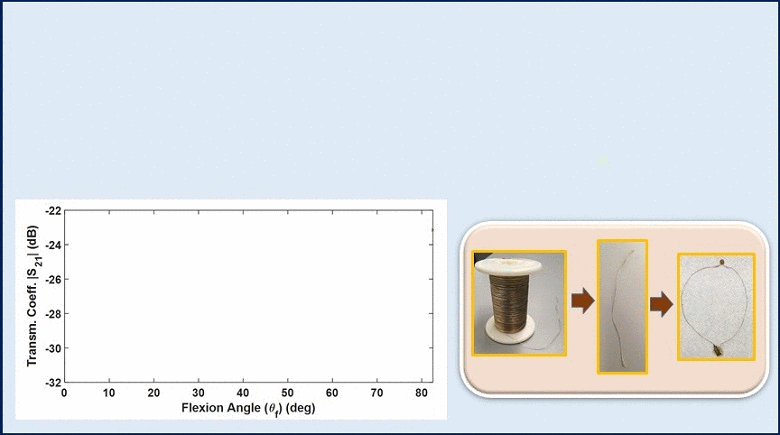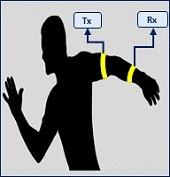
Monitoring human body kinematics can open doors to innumerable applications in sectors including (a) healthcare (rehabilitation, and research on understanding complicated motor disabling conditions), (b) sports (rehabilitation and training), (c) gesture recognition, (d) gaming, and (e) virtual reality, among others.
To implement the abovementioned applications to their true potential, a technology is required which can monitor human motion (a) seamlessly, (b) in real-time, (c) reliably, (d) in uncontrived settings, and (e) without restricting natural motion. State-of-the-art technologies such as optical cameras, Inertial Measurement Units (IMUs), time-of-flight and bending sensors suffer from drawbacks which limit realization of the above. As an alternative, we propose monitoring of joint flexion using wrap-around coils that are integrated into clothes via e-thread embroidery. Two such coils (one acting as transmitter and one acting as receiver) wrapped around the limb and across the joint get coupled by means of Faraday’s law of induction. In turn, the transmission coefficient changes as the flexion angle changes, thereby recording flexion wirelessly while being robust to limb rotation.
Proof-of-concept simulations and in vitro experiments are in excellent agreement. The operating frequency is optimized to 34 MHz, bringing forward reduced power requirements, improved angular resolution and most importantly robustness to changes in tissue dielectric properties. Additional requirements pertinent to translating the design to several real-world settings, such as, gap selection, effect of limb size, and multi-coil configurations are also considered. Specific Absorption Rate (SAR) calculations further show that the system is safe for human use. Finally, performance benchmarking with state-of-the-art IMU sensors demonstrates equivalent or superior performance using the proposed approach for flexion angles greater than 20°.

